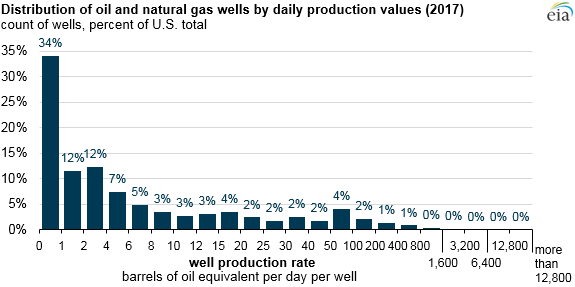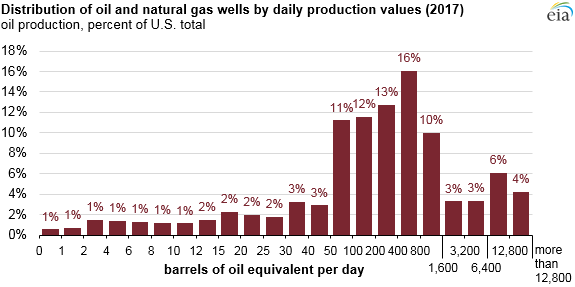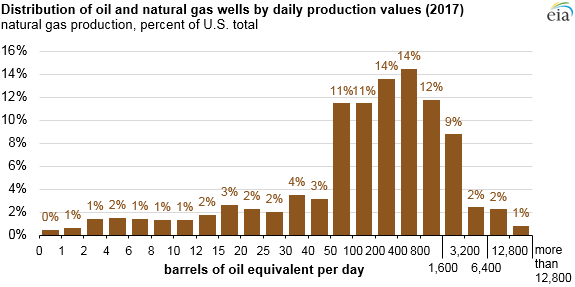The total number of wells producing crude oil and natural gas in the US fell to 991,000 in 2017, down from a peak of 1,039,000 wells in 2014, while, in 2017, the daily production rates of individual wells contributed to an increase of US total crude oil and natural gas production, according to EIA. This reflects the advances in technology and drilling techniques, EIA noted.
Wells are classified as nonhorizontal and horizontal. According to that:
- Nonhorizontal wells decreased from 940,000 in 2014 to 864,000 in 2017.
- Horizontal wells are developing as a share of the total: in 2014 wells accounted for 10% of the total whereas in 2017 wells accounted for 13% of total wells drilled.
Horizontal wells are more expensive in comparison to vertical wells. However, they contact more reservoir rock and as a result produce greater volumes. 1% of vertical wells produced at least 100 barrels per day of crude oil in 2017, but 30% of horizontal wells produced at least 100 b/d. These horizontal wells became more common, and so the production growth continued even as the well count fell.
Even with less wells U.S. oil production rose from 8.7 million b/d in 2014 to 9.3 million b/d in 2017. The same period, U.S. natural gas gross withdrawals increased from about 78.7 billion cubic feet per day to 83.4 Bcf/d. Since 2017, crude oil and natural gas production has continued to grow, most recently measured at 11.3 million b/d and 85.2 Bcf/d in August 2018.
Finally, in EIA’s report wells are grouped into 26 production volume brackets, ranging from less than one barrel of oil equivalent per dayto more than 12,800 BOE/d. In 2017, wells within this range accounted for 9% of the overall count of wells but 62% of crude oil production and 63% of natural gas production.



































































